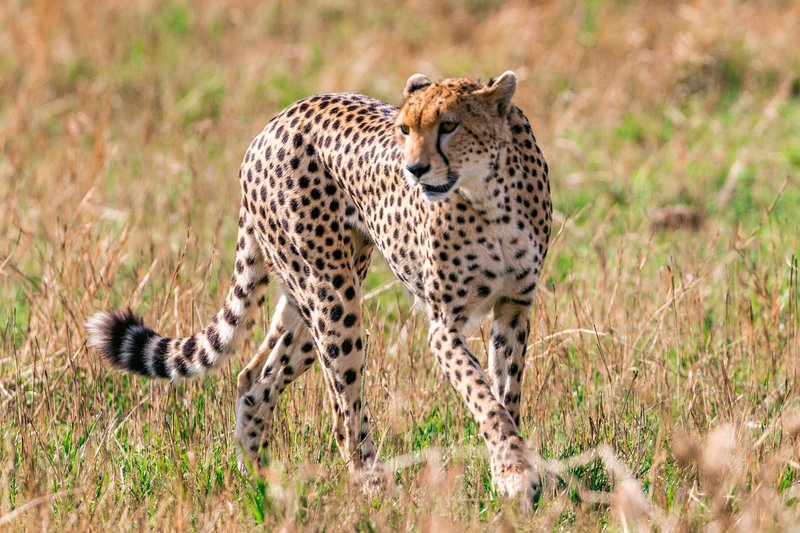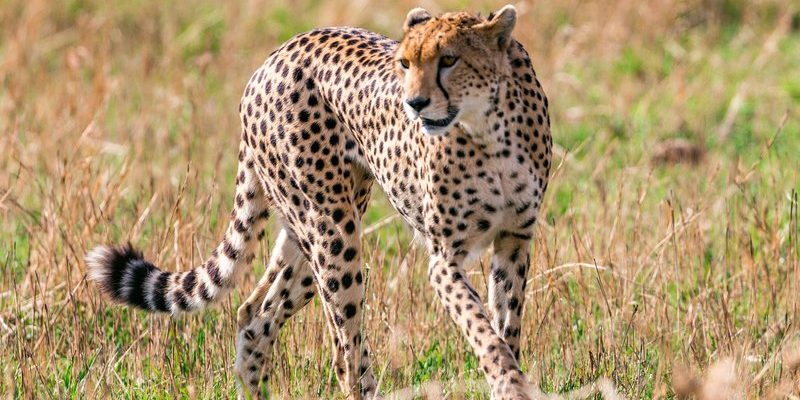
The cheetah is a fascinating creature, often celebrated as the fastest land animal on the planet. Imagine a sleek sports car, designed for speed, weaving effortlessly through a winding track; that’s what a cheetah resembles in the wild. Known for its exceptional speed and unique hunting techniques, this big cat captivates our imagination and shows us the beauty of nature’s design.
But there’s so much more to the cheetah than just its incredible speed. From their social structures to their habitats, understanding these magnificent animals helps us appreciate their role in the ecosystem. So, let’s dive into what makes the cheetah truly extraordinary and learn about its unique traits, behavior, and conservation needs.
Physical Characteristics
Cheetahs are easily recognizable due to their distinctive appearance. They have a slender body built for speed, long legs, and a small, rounded head with high cheekbones. The most striking feature is their unique coat, which is a golden hue adorned with black spots. This pattern not only adds to their beauty but also provides effective camouflage in their natural habitat.
On average, adult cheetahs weigh between 75 to 140 pounds and stand about 28 to 36 inches tall at the shoulder. Their long, muscular tails are not just for show; they help the cheetah maintain balance while sprinting at incredible speeds of up to 60 to 70 miles per hour in short bursts. This speed, however, comes at a cost: a cheetah can only sustain such velocity for around 20 to 30 seconds before it needs to rest.
Interestingly, cheetahs also have large nostrils that allow for increased oxygen intake while running. Their unique adaptations are a perfect example of how evolution shapes an animal for its environment. In races against time, every little detail matters for the survival of this magnificent creature.
Habitat and Distribution
Cheetahs primarily inhabit grasslands, savannas, and open forests where they can easily spot prey and utilize their speed for hunting. They prefer areas with patches of bush or trees that provide cover but also allow them to sprint after their targets. These habitats are crucial, as they offer both shelter and a hunting ground.
Once widespread across much of Africa and parts of Asia, cheetah populations have significantly declined due to habitat loss, hunting, and competition with other large predators. Today, cheetahs are mainly found in sub-Saharan Africa, with small populations in Iran. Understanding their distribution helps conservationists formulate strategies to protect these magnificent animals and their habitats.
Conserving the cheetah’s habitat is critical not just for their survival but also for the various species that thrive in these ecosystems. Protecting their territory ensures a balanced environment, which can benefit both wildlife and local communities.
Diet and Hunting Behavior
Cheetahs are carnivorous and primarily hunt small to medium-sized ungulates, such as gazelles and impalas. They rely on their exceptional eyesight to spot their prey from a distance. Unlike other big cats, cheetahs are daytime hunters, taking advantage of the cool mornings and late afternoons when their targets are most active.
Once they spot a potential meal, cheetahs employ a strategic approach. They stalk their prey while keeping low to the ground to avoid being seen. When they’re close enough, they initiate a high-speed chase, using their powerful leg muscles to accelerate rapidly. This is where their speed truly shines—within a few seconds, they can go from standing still to sprinting faster than a car in a race.
After catching their prey, cheetahs need to rest before they can eat. This is because sprinting takes a toll on their bodies. Interestingly, once they catch their meal, they must eat quickly, as other predators like lions or hyenas may try to steal their kill. This competition underscores the delicate balance of survival in the wild.
Social Structure and Behavior
Unlike most big cats that are solitary, cheetahs have a unique social structure. Female cheetahs tend to be solitary, raising their young by themselves, while males often form small groups called coalitions, usually consisting of brothers. This social behavior helps male cheetahs increase their chances of mating and protect their territory.
Mothers are incredibly devoted, teaching their cubs essential survival skills, like hunting and avoiding danger. Young cubs stay with their mother for about 1.5 to 2 years before venturing out on their own. This nurturing aspect of their behavior highlights the importance of family dynamics in the animal kingdom.
Cheetahs communicate using a range of vocalizations, body language, and even facial expressions. They can make chirps, growls, and other sounds to convey their feelings or alert others to potential threats. Understanding their social interactions offers insight into the complex lives of these remarkable animals.
Conservation Status
Sadly, cheetah populations are in decline, and they are currently listed as vulnerable by the International Union for Conservation of Nature (IUCN). Various factors contribute to this alarming status, including habitat loss due to agricultural expansion, human-wildlife conflict, and poaching. As human settlements grow, the room for these magnificent creatures shrinks.
Several conservation efforts aim to protect cheetah populations and their habitats. Organizations work on establishing wildlife corridors that allow cheetahs to roam freely between protected areas, reducing conflicts with farmers and increasing genetic diversity. Engaging local communities in conservation efforts is also crucial, as fostering coexistence can lead to healthier ecosystems.
Every one of us can contribute to cheetah conservation. Raising awareness, supporting wildlife organizations, and promoting responsible tourism helps create a brighter future for these beautiful cats. Together, we can ensure that future generations have the opportunity to witness the incredible agility and speed of the cheetah in its natural habitat.
| Characteristic | Details |
| Size | 75 to 140 pounds (34 to 64 kg) |
| Height | 28 to 36 inches (71 to 91 cm) at the shoulder |
| Speed | 60 to 70 miles per hour (97 to 113 km/h) |
| Diet | Carnivorous, primarily small to medium-sized ungulates |
| Habitat | Grasslands, savannas, open forests in sub-Saharan Africa |
| Lifespan | 10 to 12 years in the wild; up to 20 years in captivity |
FAQ
What is the cheetah’s top speed?
The cheetah holds the title for the fastest land animal, capable of reaching speeds of up to 60 to 70 miles per hour (97 to 113 km/h). However, this speed can only be maintained for short distances of about 20 to 30 seconds due to the immense energy required during their sprint.
Are cheetahs social animals?
Cheetahs have a unique social structure. While females are generally solitary and raise cubs on their own, male cheetahs often form coalitions with their brothers. This social behavior provides protection and increases their chances of mating.
How do cheetahs hunt?
Cheetahs are daytime hunters that rely on their keen eyesight to spot prey. Once they’ve identified a target, they stalk it and then initiate a high-speed chase. Their flexible spine and long legs allow them to sprint quickly, making them effective hunters.
What do cheetahs eat?
Cheetahs primarily feed on small to medium-sized ungulates, such as gazelles and impalas. They must eat quickly after a successful hunt, as other predators may try to steal their kill.
Where do cheetahs live?
Cheetahs are primarily found in sub-Saharan Africa, although there is a small population in Iran. They inhabit grasslands, savannas, and open forests, environments that provide the necessary resources to thrive.
What threats do cheetahs face?
Habitat loss, hunting, and competition with larger predators like lions or hyenas pose significant threats to cheetah populations. As human activity encroaches on their habitats, these magnificent animals are increasingly at risk.
What is being done to save cheetah populations?
Conservation efforts include establishing wildlife corridors to connect protected areas, engaging local communities in conservation practices, and raising awareness about the importance of preserving cheetahs and their habitats.
How long do cheetahs live?
In the wild, cheetahs typically live for about 10 to 12 years, while in captivity, they can live up to 20 years. Their lifespan is often impacted by environmental conditions and threats from other predators.

